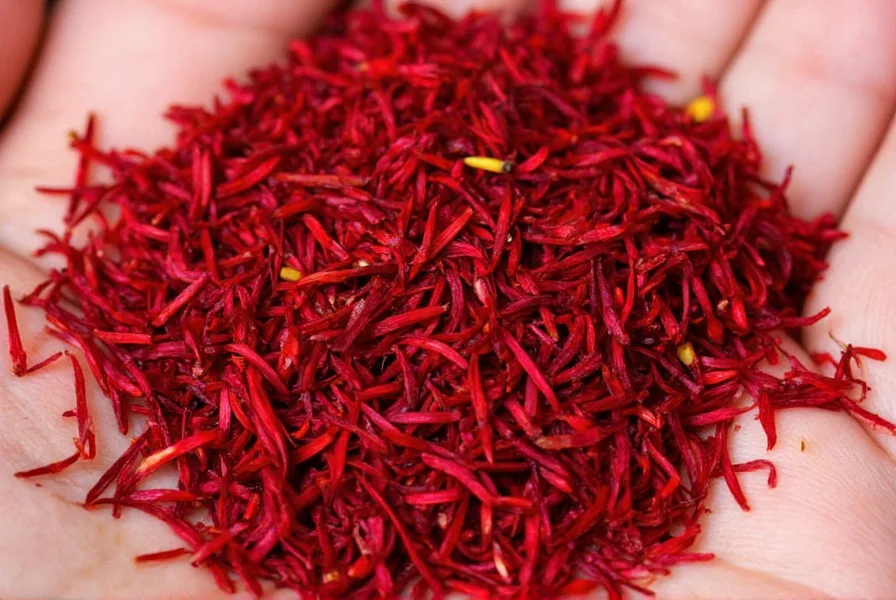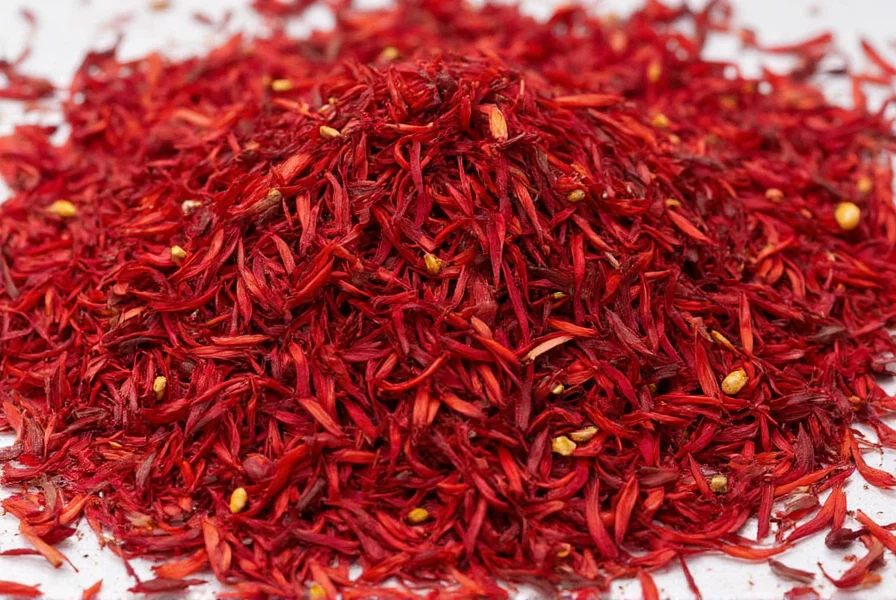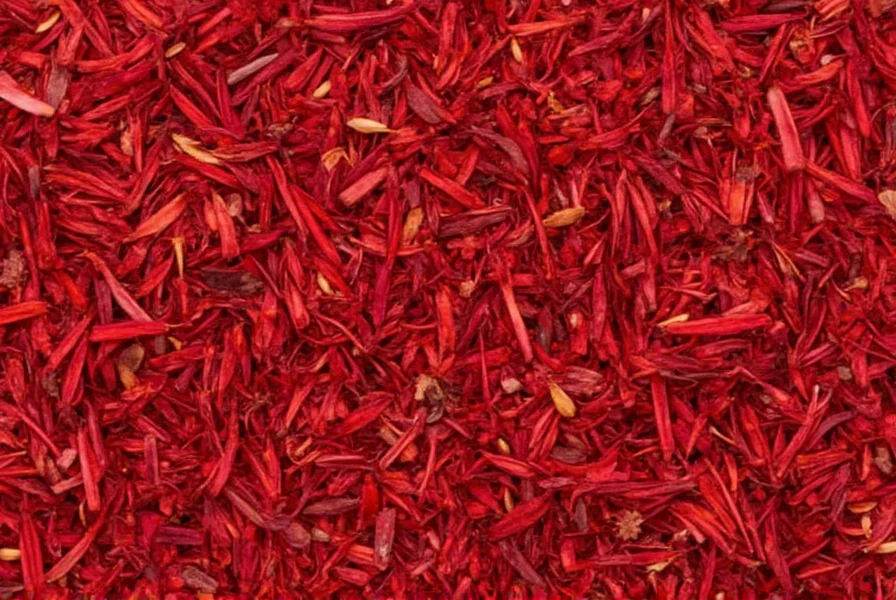Saffron's legendary status as the world's most expensive spice stems directly from its incredibly labor-intensive harvesting process. Understanding the true source of saffron reveals why this golden spice commands such premium value and helps consumers identify authentic products in a market rife with adulteration.
The Botanical Origin: Crocus sativus
The Crocus sativus flower, commonly called the saffron crocus, is the sole botanical source of genuine saffron. Unlike many commercial crops, this sterile triploid plant cannot reproduce through seeds and must be propagated through corms (underground bulbs). Each purple flower produces exactly three crimson stigmas—the female reproductive structures—that become saffron when carefully dried.
Growing conditions significantly impact saffron quality. The crocus requires:
- Well-drained calcareous soils
- Distinct seasonal changes (cold winters, hot dry summers)
- Approximately 1,500-2,000 mm of annual rainfall
- Full sun exposure during growing season

Geographical Sources of Saffron Production
While saffron cultivation occurs across 30+ countries, four regions dominate global production with distinct quality characteristics:
| Country | Global Production | Harvest Season | Distinct Characteristics |
|---|---|---|---|
| Iran | 90-93% | October-November | Highest crocin content (color strength), earthy aroma |
| Spain | 3-5% | October | Milder flavor, often blended with Iranian saffron |
| India (Kashmir) | 1-2% | late October | Deep red threads, strong aroma, limited产量 |
| Greece | <1% | mid-October | Pungent flavor, protected geographical indication status |
Iran's Khorasan province produces the majority of the world's saffron, benefiting from ideal climate conditions and generations of specialized farming knowledge. Spanish saffron, while less dominant in volume, maintains premium status through strict quality controls and blending expertise. Kashmiri saffron represents a niche but highly prized variety with distinctive flavor properties.
The Labor-Intensive Harvesting Process
Understanding the authentic saffron sources requires examining the harvesting process that makes this spice so valuable. Each Crocus sativus flower blooms for only one day during a three-week autumn window. Harvesting occurs at dawn when flowers are still closed to protect the delicate stigmas from sun damage.
The process involves three critical stages:
- Picking: Workers hand-pick approximately 150,000 flowers to yield just 1 kilogram of dried saffron
- Separation: Within hours of picking, workers carefully remove the three red stigmas from each flower
- Drying: Stigmas undergo gentle dehydration at controlled temperatures to preserve volatile compounds
This intensive manual process explains why saffron costs between $5,000-$10,000 per kilogram wholesale. Mechanization remains impossible due to the flower's delicate nature and staggered blooming pattern.
Identifying Genuine Saffron Sources
Consumers seeking where does saffron come from information face challenges due to widespread adulteration. Approximately 50% of saffron sold globally contains fillers like safflower, turmeric, or synthetic dyes. Authentic saffron exhibits these characteristics:
- Deep red threads with minimal yellow style attachment
- Strong hay-like aroma with subtle metallic notes
- When soaked in warm water, releases golden-yellow color gradually (not immediately)
- Threads remain intact rather than dissolving
Geographical indications provide additional verification. Look for certifications like:
- Iranian Saffron with Tarof certification
- Spanish Coup de Sable grading system
- Kashmiri Mongra or Lacha varieties
- Greek PDO (Protected Designation of Origin) labels

Challenges Facing Saffron Producers
The geographical sources of saffron face multiple challenges that impact global supply:
- Climate vulnerability: Droughts in Iran and Kashmir have reduced yields by up to 30% in recent years
- Labor shortages: Younger generations increasingly avoid the physically demanding harvest work
- Market fluctuations: Price volatility discourages new farmers from entering production
- Adulteration: Fake saffron damages reputation of authentic producers
These challenges underscore why understanding saffron's true origin matters—not just for culinary purposes but for supporting sustainable agricultural practices in saffron-growing regions.
Common Misconceptions About Saffron Sources
Several myths persist about how saffron is harvested and its origins:
- Misconception: Saffron comes from multiple plant species
Reality: Only Crocus sativus produces genuine saffron - Misconception: Spanish saffron is superior to Iranian
Reality: Iran produces 90%+ of world's saffron, including premium grades; Spanish saffron often contains Iranian threads - Misconception: Saffron grows wild naturally
Reality: Crocus sativus is completely sterile and must be cultivated through corms
Conclusion
The true source of saffron reveals why this spice has maintained its legendary status for millennia. From the delicate Crocus sativus flowers hand-harvested across select regions to the meticulous processing that preserves its unique properties, saffron's journey explains both its extraordinary value and vulnerability to adulteration. Understanding these authentic sources empowers consumers to make informed choices while supporting the traditional farming communities that sustain this ancient agricultural practice.
Frequently Asked Questions
Where does the highest quality saffron come from?
The highest quality saffron typically comes from specific regions within Iran's Khorasan province, particularly around Torbat Heydarieh and Mashhad. These areas produce saffron with the highest crocin content (measuring color strength), which exceeds 190 on the ISO 3632 scale. Kashmiri saffron from India's Pampore region also ranks among the world's finest, noted for its intense aroma and deep red threads, though production volumes remain limited.
How can I verify the source of my saffron?
To verify saffron's source, check for certification labels like Iran's Tarof system, Spain's Coup de Sable grading, or Kashmir's Mongra designation. Examine the threads—they should be deep red with minimal yellow style. Conduct a water test: genuine saffron releases color gradually over 15-20 minutes. Reputable suppliers provide documentation about origin, harvest date, and ISO testing results for crocin, picrocrocin, and safranal content.
Why is Iranian saffron the most common source?
Iran produces 90-93% of the world's saffron due to ideal growing conditions in Khorasan province, generations of specialized farming knowledge, and established infrastructure. The region's climate—hot dry summers followed by cold winters with moderate autumn rainfall—perfectly matches saffron crocus requirements. Iranian farmers have refined cultivation techniques over centuries, achieving higher yields and quality consistency than other regions. Economic factors also play a role, as saffron farming provides vital income in these agricultural communities.
Can saffron be grown outside traditional source regions?
Yes, saffron can be grown outside traditional regions but with significant challenges. Successful small-scale production occurs in New Zealand, California, and parts of Europe where farmers replicate ideal conditions. However, commercial viability remains limited due to climate mismatches, higher labor costs, and lack of generational expertise. The plant requires specific temperature fluctuations and soil conditions that are difficult to replicate artificially. Most non-traditional regions produce saffron at much higher costs with inconsistent quality compared to established sources.
How does the source affect saffron's flavor profile?
Saffron's source significantly impacts its flavor profile due to terroir effects. Iranian saffron typically offers strong coloring power with earthy, hay-like notes. Spanish saffron often presents milder flavor with subtle honey undertones, partly due to blending practices. Kashmiri saffron delivers intense floral aroma with distinctive bitter-sweet complexity. Greek saffron tends toward pungent, metallic notes. These differences stem from soil composition, climate conditions, and processing methods unique to each growing region, making origin a critical factor in culinary applications.











 浙公网安备
33010002000092号
浙公网安备
33010002000092号 浙B2-20120091-4
浙B2-20120091-4